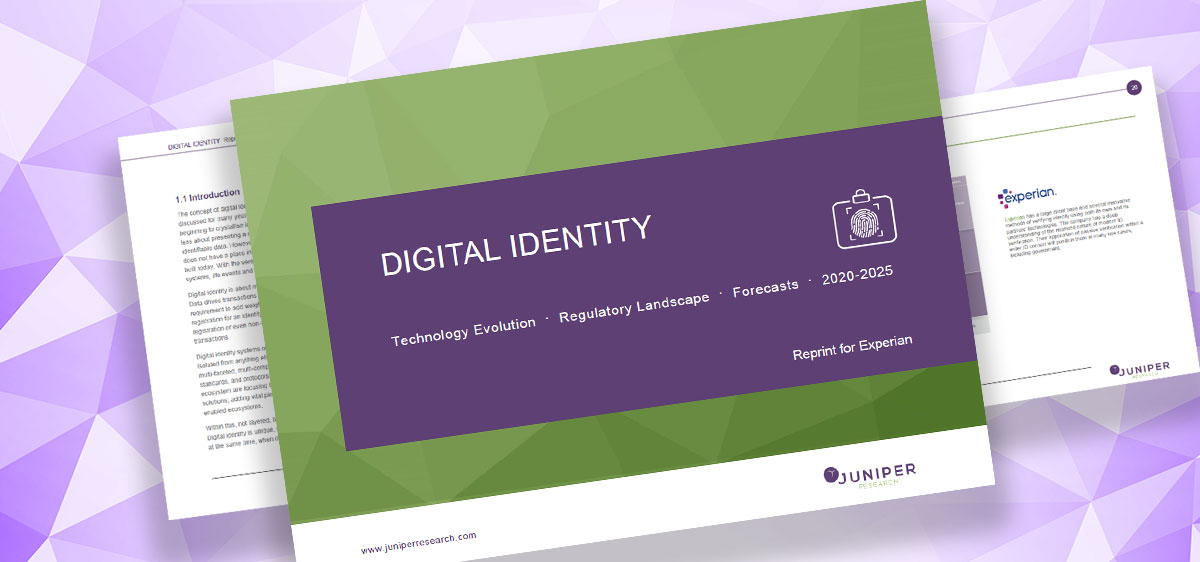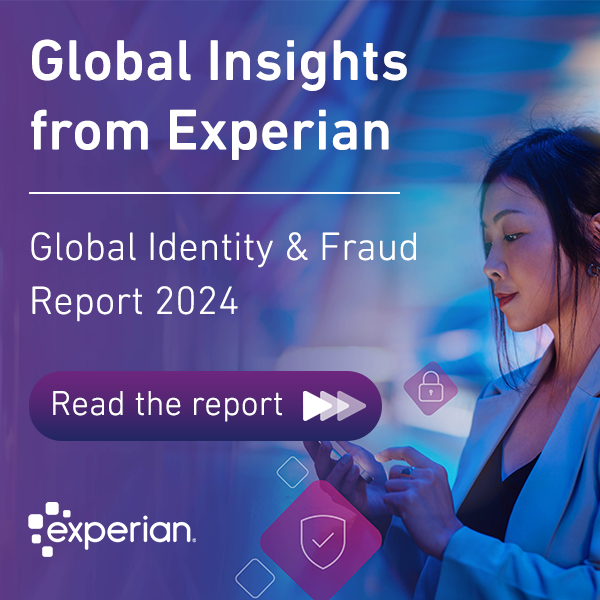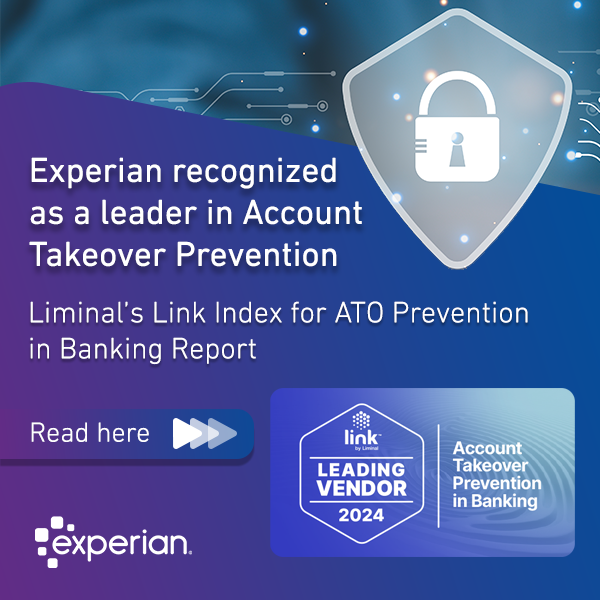Search Results for: data

In honor of International Women's Day, we've curated a list of our top stories from over the past year authored by women leading change in the data, analytics, and technology industry. Right offer, right time: What organizations really need from digital decisioning software By Donna DePasquale, executive vice president, Global Decisioning Software The true potential of digital decisioning brings to mind the intrinsic reward of talking with someone that really gets you. It’s that “aha” moment when they say just what you needed to hear or offer the help you wanted—without you having to ask. The rise of digital decisioning software enables organizations to scale a similar level of personalization, offering customers what they need at the exact right time. And organizations that do it well dramatically improve the customer experience and drive loyalty and revenue in the process. But realizing this promise takes the right tools. The most effective decisioning platforms include a powerful combination of data, analytics, and technology. Equally important, the software must allow non-technical users to update and change strategies to better meet customer and organization needs without burdening IT. …Read more Consumer demand for digital will persist and the customer journey will be redefined By Stacy Schulman, senior director of marketing, Global Decision Analytics With the turn of a new year, there’s positive news that a vaccine is making its way to local communities. As businesses set their goals and strategic agendas, a top question comes to mind: what consumer trends are here to stay post-pandemic. While it’s difficult to predict the future, we believe many of the digital behaviors and expectations observed in the past year will persist, calling upon businesses to do more with their data, analytics, and technology to bridge online and offline customer experiences. For over the past year of the pandemic, we’ve conducted a study that looks at the impact of Covid-19 on consumer digital banking and shopping behaviors and businesses’ strategies and priorities to support their customers. …Read more Insights into Action podcast: Present and future of digital identity with Nick Maynard and David Britton By Angela Gonzalez-Rodrigues, podcast host and marketing manager, Global Decision Analytics The concept of digital identity and the ways it can be applied has been discussed for many years. While this has traditionally been more of a philosophical discussion, this notion has beginning to shape over the past twelve months, making waves across markets and driving, making many in the industry wonder what has changed to prompt that shift. In a recent episode of the Insights in Action series, Nick Maynard from Juniper Research and David Britton from Experian Decision Analytics explored the pandemic’s transformative effect on the prospects of digital identity. Over the past year, reliance on e-commerce has increased significantly increased globally, boosted by new consumer and business needs and efforts to observe social distancing and cope with the side-effects of lockdowns. …Have a listen Has my data lake turned into a data swamp? By Andrea Nighswander, senior manager of solution strategy, Global Identity & Fraud In many respects, the explosion in the type and volume of customer data businesses gather to facilitate security, ensure a convenient, user-friendly approach to customer interactions, and personalize interactions is a double-edged sword. In an era when businesses are awash in data, customers’ expectations regarding its use continue to grow. Nonetheless, when it comes time to recognize a consumer by utilizing the data, there is a disconnect between how confident businesses are in their ability to recognize the consumer and the consumer’s confidence in businesses’ ability to do the same. According to our global research, 95% of businesses say they can recognize their customers yet 45% of consumers don’t feel recognized. …Read more Biometrics as the catalyst for trust in a socially distanced world By Gena Boutin, vice president platform go-to-market success, Global Identity & Fraud According to our global research, 81% of consumers view physical biometrics as the more secure form of identity verification Conversely, as user IDs and passwords become more exposed to fraudsters, various organizations across industries are using biometrics to develop next-generation identification controls that combat fraud, make transactions more secure, and create trusted enhanced customer experiences. Driving adoption is certainly key to effect change. The good news is that biometric authentication is already part of our daily lives. Facial recognition to unlock mobile devices and fingerprint scanners to facilitate purchases are only a couple of examples of how engrained biometrics already are in our daily lives. …Read more Other related stories: Women Making Waves in Tech, a podcast series Game changers: Women in AI Video interview of Marika Vilen at Experian on identity verification

As the demand for digital exploded over the past year, companies responded in kind. Those who were prepared rapidly scaled their digital capabilities to accommodate the sudden influx of customers. And those who were caught off guard? Many found themselves scrambling to meet the moment. For both parties, the result has been an accelerated digital transformation that's benefiting businesses and customers alike. The focus has been primarily on improving the front-facing customer experience. But as we look ahead, the dramatic shift toward digital has also opened up opportunities to enhance the security and authentication experience too. By weaving authentication into the customer micro journey—the subsets of tasks that comprise the customer journey—we can strengthen security and decrease fraud. And the data collected along the way creates wholly new opportunities for personalization that improve the experience that much more. A brittle solution The most common authentication approach requires customers to create usernames and passwords and provide personal information to verify their identities. Customers increasingly expect that companies will require them to provide this personal information to secure their accounts. In fact, in a recent Experian survey, 45% of customers said they'd be willing to share more personal data with companies. However, as long as passwords serve as the primary security tool, the approach remains vulnerable. First, it's unlikely that companies would (or should) continuously ask customers to provide passwords and verify their identity at various stages in the customer journey. This means that there's one big gate for fraudsters to scale and limited hurdles once they've gained access to an account. Certainly, passwords are unique to an individual, which is a positive. But they're also brittle, so they're easily broken or compromised. They don't flex with the user or the customer experience, nor do they offer security beyond a specific juncture. As we look to improve the customer experience continuously, we also need to provide end-to-end authentication. Doing so ensures you can recognize customers at every point of their journey, whether they're logging in or checking out. Securing the micro journey An end-to-end approach requires an understanding of customer micro journeys. It's not enough to provide a great digital experience, say via your account onboarding, but then have a completely different experience when a customer needs access to payment support. Considering micro journeys allows you to dive deeper into each component of the consumer lifecycle, and to understand the nuanced interactions that occur within each of those stages. Rather than just focusing on general approaches across Onboarding, Login Access, Transactions, etc., each one of these stages can be broken into smaller discrete steps (micro journeys), where opportunities exist to simultaneously delight the customer, and to create a much more nuanced risk management strategy. Then you can ensure that each task is seamless, easy, and personalized to the individual. Such a strategy can create deep and lasting customer loyalty. And identification remains a crucial part of every micro journey. No one likes to be at a party and have the host ask them their name repeatedly. The concept applies to security as well. Passive or invisible approaches to authentication eliminate this friction. For example, companies can continually authenticate the customer by employing physical or behavioral biometrics as they progress through the journey. The technology considers: How does the customer hold their device? What time are they usually active? How much pressure do they apply to the screen? Such data paints a much more nuanced picture of an individual—and one that's exceptionally hard to impersonate. And while privacy concerns arise, the type of data required to authenticate customers in this way is far less intrusive than asking for personal information. Customers are increasingly amenable as well. In our research, consumers cited physical biometrics, OTP, and behavioral biometrics as their preferred authentication methods. Passwords didn't even make the top 5. A holistic approach We're at a point in which forward-looking companies can rethink the complicated security dance they've been asking customers to do and move toward a more passive approach. It's an evolution that doesn't just improve the security experience; it also opens up massive opportunities for increased personalization. The data gathered across these micro journeys enables you to design experiences that truly meet customers' individual needs. That capability can become a significant differentiator and driver of growth. Getting there, however, requires a holistic view of your customer experience—one that includes security as a critical element. Our past three research waves show organizations are starting to deprioritize fraud prevention in favor of customer care and online offerings. This is a concerning trend: companies cannot forgo one for the other. Instead, organizations will need to consider both security and customer experience and creatively explore how to bring them together. It's a long-term strategy for customer retention and growth, one that requires a deep understanding of your audience as well as the solutions needed to enable passive authentication. For organizations, the journey toward passive authentication as part of the customer experience is more of a marathon than a sprint. But by focusing now on melding recognition and the customer experience together, organizations can ensure they're ready to deliver high-quality, less intrusive, and more secure experiences that customers are beginning to demand. Related stories: The evolution of digital identities What your customers say about opening new accounts online during Covid-19 and impacts on how you handle customer authentication 2021 Predictions: Consumer demand for digital will persist and the customer journey will be redefined

Did you miss these February business headlines? We’ve compiled the top global news stories that you need to stay in-the-know on the latest hot topics and insights from our experts. Experian launches new anti-fraud platform for digitally accelerated world Financial IT covers the latest on tools to help businesses safely meet the rapid increase in demand for digital services and online accounts. Eduardo Castro, Head of Identity & Fraud, speaks to gaining confidence in preventing fraud while meeting these new business challenges. Experian helps Atlas Credit double approval rates while reducing credit losses by up to 20 percent This Global FinTech Series article provides insights on efforts to make the power of artificial intelligence accessible for lenders of all sizes. Shri Santhanam, Executive Vice President and General Manager of Global Analytics and AI, shares background on constantly-changing economic conditions impacting credit models and how to rapidly develop and deploy models to keep up. 60 percent of consumers are using a universal mobile wallet New research shows a continuing trend toward digital transactions and mobile wallet payments. Steve Wagner, Global Managing Director of Decision Analytics, speaks to consumer and business insights on the increased demand and what businesses need to consider to ensure positive customer journeys that support these shifts. Why digital identity and the customer journey is crucial for today’s businesses Steve Pulley, Managing Director of Data Analytics, explores business opportunities stemming from the massive increase in consumers accessing services online. Taking the right steps not only helps ensure business survival but sustainable success. The key is fundamentals including the customer journey and digital identity. How modern data strategies underpin the digital identity and authentication practices critical to digital transformation In this Datanami article covering our progression toward a 'contactless world,' modern fraud prevention is explored. Dealing with a tremendous amount of data to offer security, while bearing in mind customer convenience, requires sophisticated technology. Holistic approaches both improve operations and helps keep pace with fraudsters to protect customers. Stay in the know with our latest insights:

Artificial Intelligence (AI) offers people and companies many advantages, and we interact with it every day. From the technology we use to do simple things like heating and cooling our homes, to more advanced tools that map potential disease outbreaks across the globe. AI is also being used more and more in the financial services sector – from matching new customers with the right loan and terms to assisting with transactions in real-time online. In a recent study, we found two-thirds of businesses surveyed globally are using AI to help manage their businesses today. More businesses are keen to use AI but are challenged to fulfill requirements for decision explainability – a must-do for ensuring consumers are treated fairly. The history of AI AI stems from the realization of the potential of computation. The father of theoretical computer science and AI, Alan Turing, introduced a theoretical mathematical model of computation – aptly named the Turing Machine – in 1936. He described this machine as being capable of computing anything computable. By 1950, his work posed the question “Can machines think?” He introduced the Turing Test, still in use today to subjectively evaluate whether a machine is intelligent based on its ability to have a conversation. Six years later, in 1956, prominent computer scientists proposed the famous Dartmouth Summer Project. Advanced concepts were introduced and discussed and the term "artificial intelligence" was first coined. Over the following two decades, AI flourished. Computers became not only faster, cheaper, and more accessible, but they were progressively able to store more information. Meanwhile, machine learning algorithms continued to improve, getting the interest of experts in different fields and industries and taking the realm of artificial intelligence to a tipping point in the early ’80s. Back then, John Hopfield and David Rumelhart popularized “deep learning” techniques which allowed computers to learn from experience. Meanwhile, Edward Feigenbaum introduced expert systems which mimicked the decision-making process of a human expert, allowing the program to ask an expert in a field how to respond in a given situation and to learn from it. How can AI benefit both businesses and consumers? Following these early milestones, the advanced analytics sector has experienced explosive growth – with AI impacting many aspects of our lives today. While most people have come to realize that AI can be beneficial, even since the early days, there have been many different views on how those involved in programming the algorithms must take the necessary steps to prevent AI from reinforcing stereotypes, widening wealth and educational gaps, or providing incorrect answers at critical junctures such as in a medical setting. As an example of what not to do: a famous language model was trained using 8 million pages sourced directly from the web. So, implicit in this model are the preconceptions and biases included in its training data. In this case, it led to a model with a trend towards greater male bias in more senior, higher-paying jobs. How to determine fairness in AI models So how can we ensure that the use of AI does not reinforce societal racism, sexism, or other stereotypes? That leads us to define fairness. It’s the impartial and just treatment of people without favoritism or discrimination; when no unjustified distinctions occur based on groups, classes, or other categories to which they are perceived to belong. But, within the world of AI, there are varying approaches to fairness associated with different metrics to evaluate and adopt this sought-after algorithmic fairness. Any solution requires defining dimensions of fairness, but realistically, it’s extremely hard to capture all these very sensitive variables and risky to store and process them. To truly determine if an AI system is fair requires an enormous amount of data and expertise. Additionally, promoting fairness requires an approach across the entire data science life cycle and modeling life cycle. All areas must be considered from the approach to data collection to ongoing evaluation of decisions. And, while fairness in AI is not ‘once and done’ or easily solved, the good news is that it is an area of great focus for regulators, academics, and data and analytics industry experts, like our peers at Experian. The growing importance of transparency and explainability Models generally compute calculations that are complex and involve more dimensions than we can directly comprehend. Given this processing step from model-input-to-model-output is unclear, it leads to questions around how a model has come to a decision. Importantly, how can one be sure that the model is behaving as expected? There are different ways to address explainability. One includes an understanding of how different inputs of a model affect its outputs. Shapley values, introduced by Nobel prize winner Lloyd Shapely, consider an aggregate of marginal contributions for all possible combinations. Another technique involves explaining the behavior of a decision by identifying model constants verse variables to extract what drove a decision and how. Yet another method uses counterfactual explanations, identifying the precise boundary where a decision changes. This method is easy to communicate since it involves statements such as if X had not occurred, Y would not have happened. As in the case of fairness, there’s an on-going dialogue around explainability, underpinned by current and yet to emerge new techniques that maintain model accuracy and improve explainability. Artificial intelligence is past its infancy stage. It’s already had an impact on our daily lives and is becoming increasingly ubiquitous. Fairness, along with a transparent and explainable approach are key ingredients to help this field continue its transition to maturity.

If the past year revealed the rising demand for everything digital—it also highlighted key aspects of the online customer journey that organizations have neglected. Until now, most companies have prioritized their digital investments around the revenue-generating aspects of the customer experience. Online account onboarding, e-commerce, and credit lending are prime examples. However, when consumers require different outcomes such as payment support, the interactions are often still handled by call centers. We saw the consequences of this play out during the pandemic. As stay-at-home orders left call centers closed or understaffed, customers who needed help found themselves spending hours on the phone—or worse, were left without guidance. This digital disconnect may be common, but hopefully not for long. Forward-looking companies are creating end-to-end digital customer experiences that benefit customers and the business. From improved customer LTV (Life Time Value) to cost savings, the results reveal that prioritizing customers at every turn pays. The future of digital experiences revealed The last year yielded many insights into how, why, and when customers engage with a business digitally. Faced with few options, customers turned to online resources in droves. And unlike years past, when younger generations have driven digital adoption, the crisis forced customers of all ages to engage with businesses online. Around the world, companies rose to the challenge. According to Experian research, nine out of 10 businesses currently have a strategy for serving their digital customers, with 47% implementing their strategies since Covid-19 began. The rapid shift to digital uncovered opportunities to reach new markets. For example, online grocer Instacart™ launched support services specifically for seniors interested in grocery delivery. However, the sudden spike in consumer demand for engaging with businesses online also revealed significant gaps in the digital customer journey. Consider that only one in four consumers report that they can get help when they need it from a customer representative while online. We saw this play out in real-time after a global bank reached out because it needed a digital solution for payment support. The company had traditionally routed customers to a call center for help. But during the crisis, it was overwhelmed by demand. While working with this bank on a self-serve solution that enabled customers to address their payment concerns online, the experience revealed something important about the future of digital experiences: Regardless of where they are in their journey, customers expect—and deserve—the same experience. True digital yields a true value Investing in a seamless digital customer journey is a long game, but it's one that can pay off exponentially. As we’ve seen, organizations have prioritized digital investment that brings in near-term revenue. These include mobile capabilities that increase customer conversions or personalized offerings that boost the average spend. And make no mistake, digital solutions that meet these needs are essential. But the customer who applies for a vacation loan may be the same one who later needs a payment holiday. Meeting these needs digitally, no matter what they are, engenders deep loyalty. Companies that support their customers during downtimes will gain customers for life and reap the benefits when those individuals are inevitably back on their feet again. The happy result is not only increased financial stability for customers but also improved advocacy scores and customer lifetime value. Additionally, an end-to-end digital customer experience can yield unexpected cost savings. For instance, an organization we recently worked with was spending an average of $35 per customer interaction. Their customers accessed customer service representatives via many independent channels, incurring costs each time they connected. We provided them with a multi-channel digital solution that reduced the cost to between $5 and $7 that allowed several interactions and provided consistent experience in the process. In the end, the company was able to deliver better service at a much lower cost point. From here to there The goal of building an end-to-end digital experience is a worthy one, and there are a few components of a forward-looking digital strategy that will help ensure success. First, companies need to create systems and cultures that allow them to respond to changing customer demands. No one predicted that a pandemic would rapidly accelerate our digital shift. But the companies improved their digital capabilities to meet the need came out ahead. Also, while customers experience the technology's front-end, orchestrating and supporting that journey across a range of consumer touchpoints driven by different events is equally as important. Implementing decisioning tools that leverage data across systems allows you to create advanced analytical models that predict customer behavior, potential problems, and more. Organizations can then make decisions in real-time to support customers and the business when they need help, be it a global pandemic or an environmental event. Lastly, taking advantage of emerging technologies can ensure your company keeps pace with the rapidly evolving expectations customers have for their digital experience. For example, AI-powered virtual assistants learn from every interaction and provide more personalized service than a standard chatbot that uses decision trees. These virtual assistants won't replace humans but leveraging them to augment customer experiences offers additional support to customers and creates continuity across the experience. The shift we've seen is about more than meeting the digital demand. At the core, it's about leveraging digital capabilities to see, understand and prioritize customers at all points of their journey. Then we can offer them proactive solutions that make their lives better and strengthen our businesses along the way. Related stories: New research available: Global Insights Report, February 2021 The role of the virtual assistant: Meet consumer demand for the digital experience Cloud-based decision management software is a must for re-imagining the customer journey

Since the Pandemic began consumers have been scammed more than ever before. From phishing emails, fake websites, and other scams intended to steal personal and financial information, to fake pharmaceutical goods or goods that never arrived, to account takeovers, multiple ways to defraud people have emerged or re-emerged at an alarming rate. It's an understatement to say that now more than ever customers need to be protected and it's the right time for businesses to improve some of their capabilities and offer their clients the secure experience that they expect. The results from our recent global research study of changing behaviors and priorities throughout the pandemic show us just how important online security has become for consumers: Half of the consumers surveyed say they are very/somewhat concerned about conducting activities online; with the concern being most significant in India (69%) 4-in-10 consumers express increased levels of concern about online activities since C-19. The level of concern about consumer online activities and transactions has increased significantly since C-19 in India (61%), Brazil (57%), Singapore (53%), and US (44%) – one-fifth of consumers in the US and Brazil say that their level of concern has increased significantly. 42% feel that they are more of a target for online fraud now than before COVID-19, while only 25% feel safer about sharing personal information now than they did before COVID19 The largest sources of concern among consumers are credit card information being stolen (36%), online privacy (34%), identity theft (33%), and phishing email (32%). Consumers in India, Singapore, the US, and Brazil show generally more concern. Consumers have become increasingly positive towards more security measures One positive tendency that's been observed due to the increased security concerns is that consumers have become more comfortable with security measures being added online in order to protect them better: 55% percent of consumers expect more security steps when they are online and 49% want to have more visible security measures in place while on websites 47% of all consumers are expecting business to place strong security measures that they cannot see with another 40% expecting integration of features that recognize them during online purchasing without requiring them to share their personal data In fact, US consumers have increasing expectations on strong invisible securities (increased from 50% to 59% from June 2020 to January 2021) as well as identity authentication without sharing personal data (increased from 33% to 40% from June 2020 to January 2021) Consumers are accepting of biometrics and businesses should consider using it It is not a surprise that fraud prevention methodologies such as physical biometrics (which is visible) and behavioral biometrics (which is invisible) have become more popular with the public. Both can be added as an extra layer in order to improve the authentication process by increasing its trustworthiness and efficacy. What’s also vital is that none of the two is compromising the user experience too much when compared with other more traditional authentication methodologies such as passwords or knowledge-based authentication: 74% of consumers are feeling very secure while using physical biometrics with another 16% feeling somewhat secure 66% of consumers are feeling very secure when being protected by behavioral biometrics with another 24% feeling somewhat secure So, as over half of businesses (55%) expect to increase their fraud management budgets in the next 6 months, it's recommended that they take notice of these trends and act now. What's even more important is that companies that invest in advanced customer authentication methods benefit from improved customer opinion, which feels like a win-win scenario for both parties involved: When physical biometrics are used, 57% of global consumers indicate that this enhances (somewhat/very much) their opinion of the organization When behavioral biometrics are used, 53% of global consumers say that they have a better opinion (somewhat/very much) about the organization implementing them Related stories: Global Insights Report Wave 3 (February 2021) Global Insights Report Wave 1 (June/July 2020) What your customers say about opening new accounts online during Covid-19

The concept of digital identity and the ways it can be applied has been discussed for many years. While this has traditionally been more of a philosophical discussion, this notion has beginning to shape over the past twelve months, making waves across markets and driving, making many in the industry wonder what has changed to prompt that shift. In a recent episode of the Insights in Action series, Nick Maynard from Juniper Research and David Britton from Experian Decision Analytics explored the pandemic’s transformative effect on the prospects of digital identity. Over the past year, reliance on e-commerce has increased significantly increased globally, boosted by new consumer and business needs and efforts to observe social distancing and cope with the side-effects of lockdowns. Nick and David review Juniper Research’s Digital Identity 2020-2025 Report’s findings and explain how, since the pandemic started, people have needed to remotely use those services that they'd normally use in person. Access to banking, buying groceries, or ordering food, for example. In such a context, defined by tight restrictions imposed to curb the advance of coronavirus, being able to represent your identity and verify that you are who you say you are so you can access certain digital activities safely has become absolutely critical. Indeed, it has become the way people can participate in society now, digitally. Defining digital identity in the covid era But, how to define digital identity these days? Against an ever-changing environment, identity must now be more than just traditional personally identifiable data like a name or an address. It must incorporate other components such as device identifiers, device intelligence, network information, the way you hold your phone, or even the speed you type at. All in all, digital identity is about emulating what we have all done naturally in the physical world for so long; that’s it bringing together a series of distinctive attributes that make each individual unique. In terms of how the industry is looking at this evolving concept of digital identity, Nick and David point out that a growing number of regulators are engaged with the concept of digital identity, addressing the need for modern, adaptative frameworks, guardrails, and protocols. Identity industry players have realized that identity works best when there's a network. Identity networks or systems bring together all those different stakeholders who hold identity details and have the ability to verify or use those identity details to provide greater benefit for consumers. Listen to the full podcast Access all episodes of Insights in Action on Soundcloud, Spotify, Google Podcasts

Don't miss out on the top January headlines, including the latest coverage from our global experts, including the digital identity landscape, impacts of pandemic fatigue, protecting users and their experience, Covid-19 impacts on businesses in India, and consumers' digital experience expectations. Experian selected as leading provider of digital identity This MarTech Series article looks at Juniper Research's Digital Identity: Technology Evolution, Regulatory Landscape & Forecasts 2020-2025 report. David Britton, Vice President of Industry Solutions, offers his perspective on providing both convenience and security. In 2021, loyalty shouldn't be assumed Destination CRM covers findings of the recent Experian Global Insights report, which indicates that consumers might not be as patient with businesses for much longer. The impact of "pandemic fatigue" translates to an end in consumer acceptance of the pandemic as an excuse for poor service. Establishing and protecting user identity in a digital world Eric Haller, Executive Vice President & General Manager, Identity, Fraud & DataLabs, speaks to the rise of digital and the impact on the need to be able to identify an individual. Relying on technology to help deliver a good user experience is key to avoiding too much friction in the process. 99 percent of businesses in India implement digital online strategy to recognise customers; highest in APAC: Experian Report#TradeTalks: Increasing consumer demands and expectations Business Standard looks at recent global research findings on consumer and business economic outlooks, financial well-being, online behavior, and more. Most prominently, the vast majority of Indian businesses implementing strategies to recognize customers across platforms. The top three reasons people abandon online transactions In this Global FinTech Series article, Chris Fletcher, SVP Decision Management & Cloud Services, explores the current environment of online transaction explosion and what it means for businesses to accommodate this lasting preference for digital. It will be key for each transaction to align the need for security with the right level of friction to the consumer. Stay in the know with our latest insights:

With the turn of a new year, there’s positive news that a vaccine is making its way to local communities. As businesses set their goals and strategic agendas, a top question comes to mind: what consumer trends are here to stay post-pandemic. While it’s difficult to predict the future, we believe many of the digital behaviors and expectations observed in the past year will persist, calling upon businesses to do more with their data, analytics, and technology to bridge online and offline customer experiences. Top 3 predictions: Customer demand for digital will increase beyond its need-based role, as more people discover the safety and convenience online interactions provide, even as in-person activities are restored Businesses will shift from supporting the digital channel to re-designing the customer journey that seamlessly bridges traditional to digital customer engagement Trust for engaging with businesses online will continue to grow as consumers experience the value of their information used for less intrusive security and more contextual products and services Consumer expectations for digital will continue to grow Throughout the past year, it’s likely you’ve heard or read that the consumer demand for digital is increasing. It’s important to know there’s been an upward trajectory toward digital for many years but the sudden impact of the pandemic accelerated the consumer appetite for digital engagements. A key finding in Experian's global research is the pandemic has driven 20% more consumers to use online and mobile channels from April to September 2020, globally. In specific areas that have traditionally been in-person, such as grocery shopping, we’re seeing upwards of a 60% increase in consumers engaging in these activities online. This points to a category of essential activities that have propelled people into digital that maybe otherwise would not have - for example, those over the age of 65. There's no question the security and convenience of the digital channel will mean some of those consumers will continue to shop and bank online, despite the loosening of lock-downs and in-person behaviors resume. Businesses will focus on redefining the customer journey In the early months of the pandemic, many companies adjusted their operations at break-neck speeds to meet their customers’ needs and demands. Some businesses put temporary measures in place and others, with greater capacity for technology innovation, moved up their timelines for implementing strategic digital transformation initiatives. Consumers may or may not know the behind the scenes for how businesses are changing their operations, but their impatience before and during the pandemic is unwavering. In fact, 1 in 3 consumers will wait no more than 30 seconds before dropping out of a transaction if there’s some delay in progressing or completing it. The pressure on businesses to deliver a secure, convenient experience isn’t new but there’s another factor that must be considered. As people return to doing more things in-person, there’s an equally stronger need to bridge customer engagement across both traditional and digital channels in a seamless way. Almost a quarter of businesses we surveyed are already starting to make active investments in re-defining that customer journey. Consumer trust will continue to increase as more businesses use data for value-add Covid-19 led to a substantial change in people’s behaviors over a short period of time and many consumers have found themselves more trusting of online engagements than in-person ones. Physical safety, of course, being the greatest concern. While we expect to see people loosening up on self-distancing restrictions and doing more in-person, there’s been a tipping point reached in terms of online engagement, and the consumer trends for digital will persist. In the past year, we’ve even seen indicators that people have a better understanding of how their information is used by businesses. This is especially true when it comes to protecting their identity and preventing fraud. In fact, what our research demonstrates is that consumers are willing to give more information if there’s a perceived advantage – such as tighter yet frictionless security. With this increase trust in businesses, there’s an opportunity for companies to use that information to better connect with their customers and deliver a customer experience that’s unique. Related stories: Explore our global research Best 2020 stories: Trends and insights Nasdaq #TradeTalks: Increasing consumer demands and expectations

As the world witnessed, the Covid-19 pandemic led to a swift and dramatic digital explosion. As lockdowns began, our day-to-day quickly shifted to a virtual environment. Now, on the back of this widespread response, businesses are forced to rethink their customer engagement model. And, with new digital-first customer journeys, there must be a shift to recognize customers in a predominantly digital way as well. The concept of identity – even digital identity – must evolve. Digitally observable information Recently, I spoke with Juniper Research about this imperative. After analyzing the global digital identity market, they’ve offered insights on current dynamics and trends shaping its future in their Digital Identity Report 2020-2025. Importantly, as we progress digital identities, we must consider more than what a user might typically provide about themselves. We must include digitally observable information, which forms part of a consumer's digital identity. This data includes their device (what they use), and behavioral insights (how they use the device or interact with an app or website). It even includes the specific context of their efforts (what they are doing), such as signing up for an account, moving money, making a payment, virtual window shopping, etc. Related story: View digital identity market trends infographic Intelligent data processing Of course, pulling these kinds of observations together in a meaningful and useful way requires intelligent data processing. This need leads to the use of technologies such as advanced analytics and machine learning to help make sense of the broad streams of data. The double benefit of understanding how to use this aggregated data is that, given the transparent and passive nature of observing data of this nature, it can be used without requiring the consumer to "do" anything other than going about their business. So, businesses can achieve multiple benefits by adopting a forward-looking stance to identity, including reduced risk of fraud, improved customer experience, and stronger consumer/business relationships, which ultimately leads to increased top-line growth. Consumer privacy preferences Finally, to maintain consumer trust as we progress, it's important to acknowledge consumer privacy preferences. Given consumers' concerns around privacy and security, this is an important element within the path forward. Businesses that are transparent around the use of data have been shown to garner greater consumer trust than those that don't offer that transparency. So, any reimagining of digital identity must also have "privacy by design" as a foundation to the approach – not only to meet growing regulatory demands – but, more importantly, to manage consumer expectations. “[It’s] estimated that in 2024 over $43 billion will be lost due to online payment fraud. As we carry on into an unknown future, disrupted by the pandemic, this interwoven nature of identity-security-privacy will play a vital part in making sure our internet, workplace, government services, and banking are safe havens.” -Digital Identity Report 2020-2025, Juniper Research Learn more about: Importance of the evolution of digital identities, including the ability to manage and access the growing volume of online accounts. Advancement of the identity space occurring through the simplified transmission of information via APIs, but the challenge remaining to ensure data is valid, authentic, and from an authorized person. Government attempts at digital identities have faced many challenges, but these use cases continue to progress the development of the digital identity landscape. Benefits to fraud management through the adoption of digital identities can be tremendous – decreasing risk by decoupling identities from transactions, making them more secure from both ends. Usability is king – a good customer experience underlying the use of digital identities will be critical to adoption, and therefore success. Maturation of identity offerings is currently occurring and what’s likely to be successful includes solutions that simplify identity services and those that rely on broader ecosystems. Remote working changes the enterprise approach, with the adoption of Zero Trust Architectures and relevant supporting technologies continuing to emerge to create a safe, yet flexible working environment. The digital identity competitive landscape is evaluated, including vendor analysis and Juniper’s leaderboard. Related stories: Fraud trends during a very pandemic holiday Digital Identity and Blockchain: What lenders need to know Why consumer trust in the digital experience is so important in a pandemic era

Get the latest from our global experts with these top December headlines, including meeting the demand for digital, increasing consumer expectations, women leading artificial intelligence, and protecting against fraudsters over the holiday shopping season. Investment priorities to meet consumer demand for digital banking In this BAI Banking article, Chris Fletcher, SVP Decision Management & Cloud Services, explores the investment required of financial institutions to transform their use of data and analytics and deliver on credit risk strategies. What’s the proper path for better payments? In context to consumers’ digital expectations post-Covid-19, Progressive Grocer considers the future of payments in food retail and beyond – with contactless payment options already rolling out at a large drug store chain. Wisdom from the women leading the AI industry, with Laura Stoddart of Experian Authority Magazine speaks with Laura Stoddart, Data Scientist, about her career path, her experiences working on ethical AI and using emerging datasets to evaluate risk as well as her thoughts on the future of this industry. #TradeTalks: Increasing consumer demands and expectations Steve Wagner, Global Managing Director of Decision Analytics, joins Nasdaq’s Jill Malandrino to discuss recent research findings on increasing consumer demands and digital expectations, and ongoing considerations for a post-Covid-19 world. A holiday season like no other: What to know to guard your company against fraud Itay Levy, Forbes Councils member and CEO and Co-Founder of Identiq, provides his perspective on the increased preference for online shopping and the need to strike the right balance between customer experience and efforts to mitigate fraud. Stay in the know with our latest insights:





